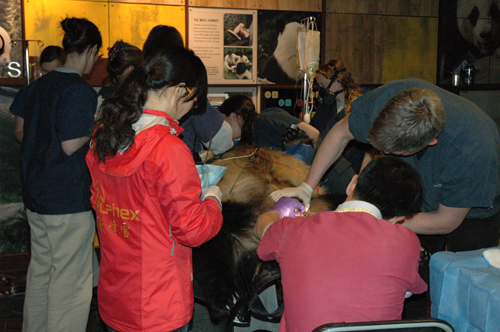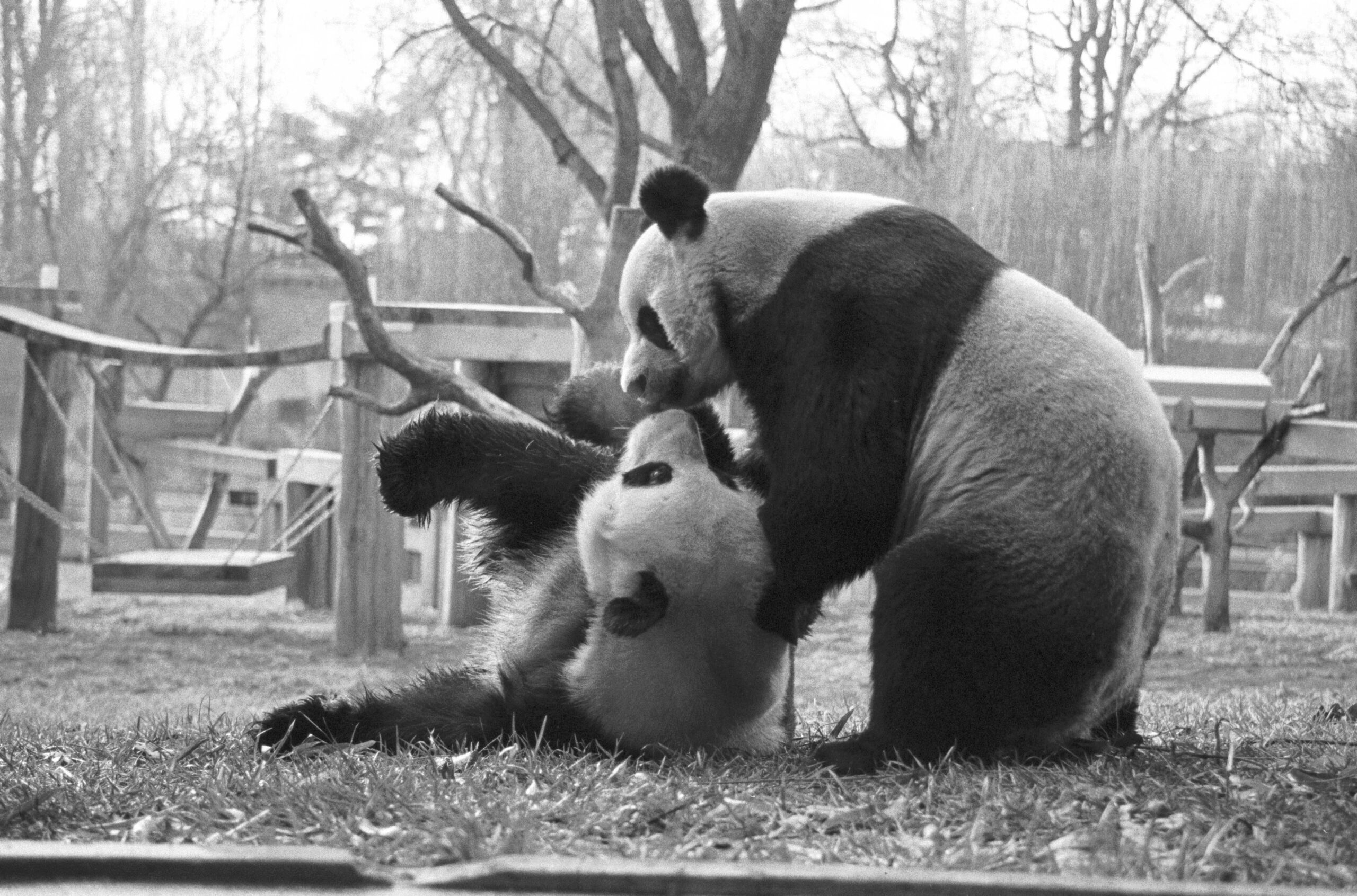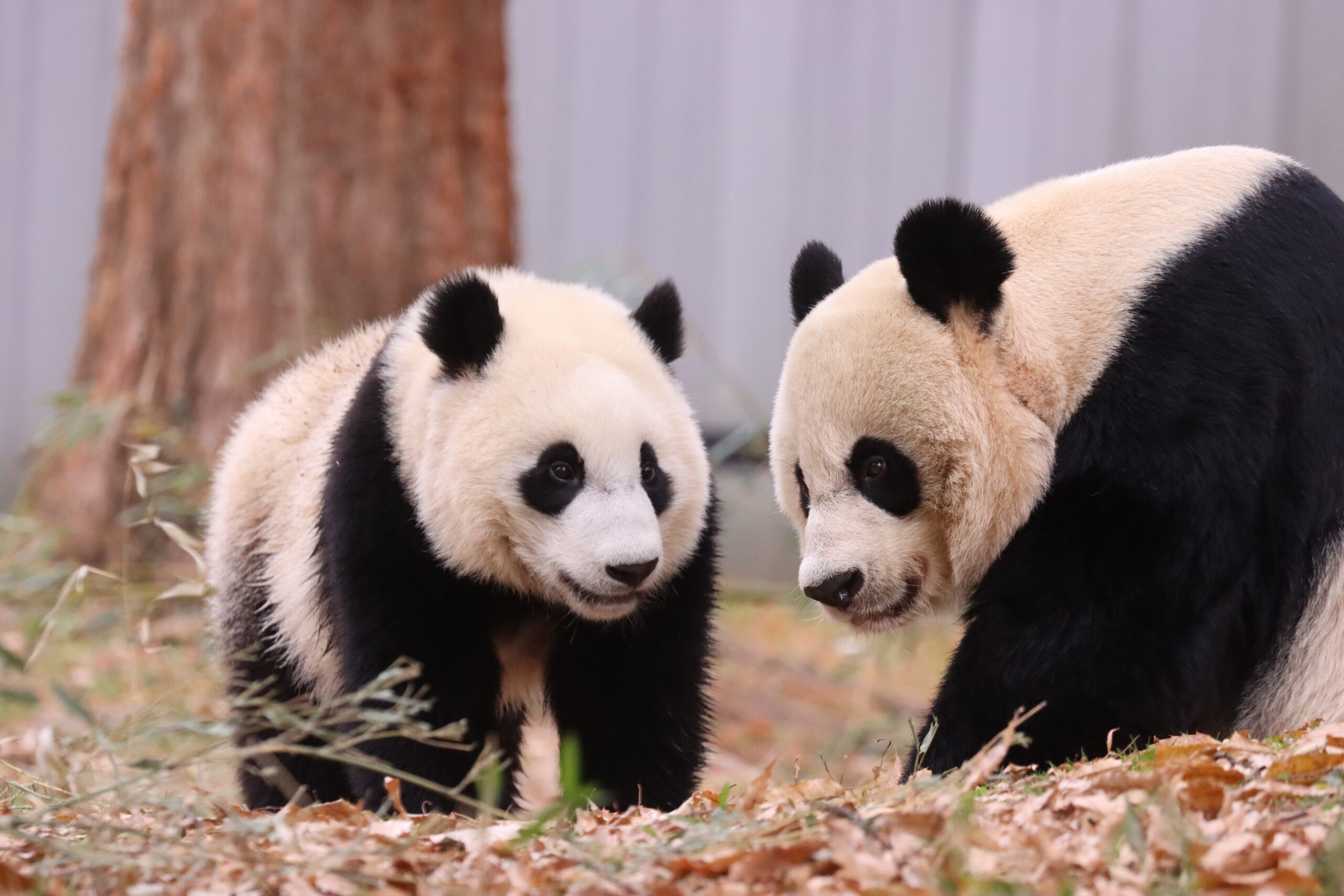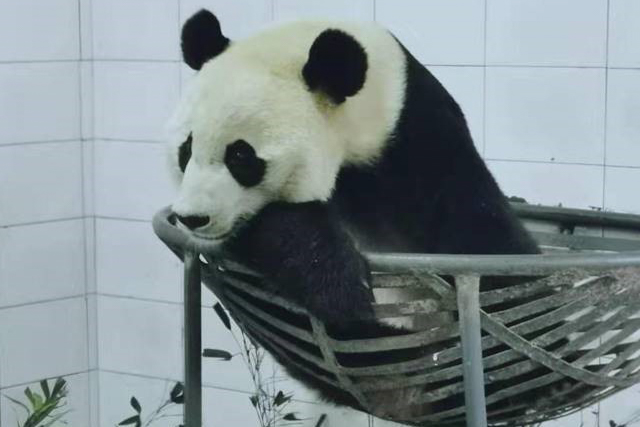Looking back to the National Zoo's Breeding Season
It has been quite a month at the David M. Rubenstein Family Giant Panda Habitat and at the Smithsonian Conservation Biology Institute in Front Royal, Virginia! The panda team performed two artificial inseminations (AI) on Mei Xiang on April 29 and 30, after she went into estrus.
Two scientists, Li Desheng and Zhou Yingmin from the China Conservation and Research Center for the Giant Panda in Wolong, flew to Washington, D.C. to help with the procedures. They arrived just in the nick of time! After landing in D.C. on the evening of April 29 they were taken directly to the Zoo where the panda keepers, veterinarians, and scientists were waiting for them. Hormonal data had revealed that after months of waiting, Mei Xiang had finally reached peak estrus and it was the optimal time to do the first AI. Li performed the first of two AIs at 2 a.m. on April 30. The second was at 4 p.m. later that day (And that’s the one we live-tweeted!)
Li returned to China a few days after the procedures, but Zhou went out to SCBI headquarters in Front Royal for a month to work in the endocrinology laboratory. Zhou is an endocrinologist at the China Conservation and Research Center and worked very closely with SCBI endocrinologist Sarah Putman and the endocrinology team during her stay.
SCBI’s endocrinologists and Zhou were able to learn a lot from each other. SCBI scientists monitor hormones from animals around the world non-invasively using urine, fecal, and hair samples. For example, at SCBI scientists analyze hair samples using a machine that grinds the hair into a fine powder so they can extract hormones from the hair by shaking the samples in an alcohol solution on a multi-tube vortexer for 24 hours. They then dilute the alcohol solution from each sample and analyze it for hormone concentrations.
Zhou monitors the hormones of the giant pandas at Wolong using urine samples, like the National Zoo does She was really excited to see how we analyze feces and hair because Li wants to do more research on wild giant pandas. It’s very difficult to get a high-quality urine sample from a wild panda. Fecal samples on the other hand, are easier to find in the wild.
Zhou will be teaching the other endocrinologists at Wolong about the new techniques she learned at SCBI. She and her colleagues are busy in China during giant panda breeding season which runs from February to June every year. There, in preparation for breeding season, the endocrinologists monitor the hormones of approximately 20 females from the more than 100 pandas that live at the Conservation and Research Center for the Giant Panda in Wolong. Last year they had 18 cubs as a result of both artificial inseminations and natural breeding. Zhou’s workdays during the breeding season can last from 8:30 a.m. until the middle of the night and can consist of running urine samples multiple times a day for multiple pandas and recommending optimal times for AIs.
Zhou was also interested to share her experiences at Wolong with SCBI endocrinologists because she wanted to see how another lab runs hormone analyses. She wanted to talk about difficult analyses that she and her colleagues have come across and compare how our endocrinology lab would have handled the situation. All the scientists had some really good exchanges and learned a great deal from each other.
Before Zhou returned to China, SCBI scientists gave her a list of all the extremely helpful equipment that the endocrinology lab at SCBI has, as well as electronic copies of the lab’s scientific protocols to take back to Wolong. In the future, it’s hoped that endocrinologists from SCBI will be able to go to Wolong and learn about what they do during giant panda breeding season.
In the meantime since the blitz when Mei Xiang went into estrus on April 29, things at the Panda House have returned to normal. We were not able to collect fresh semen samples from Tian Tian for the artificial inseminations due to the pandas’ vigorous attempts at natural breeding. Luckily, the National Zoo has frozen samples from Tian Tian collected in 2005. The semen collected in 2005 is of high quality and had good sperm motility after it was thawed.
Even though we used semen from 2005, we still wanted to collect a sample from Tian Tian this year. So, on May 16, we anesthetized Tian Tian and collected a semen sample from him. The procedure was quick, and Tian Tian was back on exhibit the same day.
We won’t know if the artificial inseminations were successful for a few months. If Mei Xiang is pregnant she could give birth any time between August and October. Female giant pandas commonly experience pseudopregnancies. That means that their hormone levels and behaviors indicate that they are pregnant even though they are not. We monitor Mei’s hormones over the coming months which will help us determine the end of a pseudopregnancy or an actual pregnancy.
Source: National Zoo










